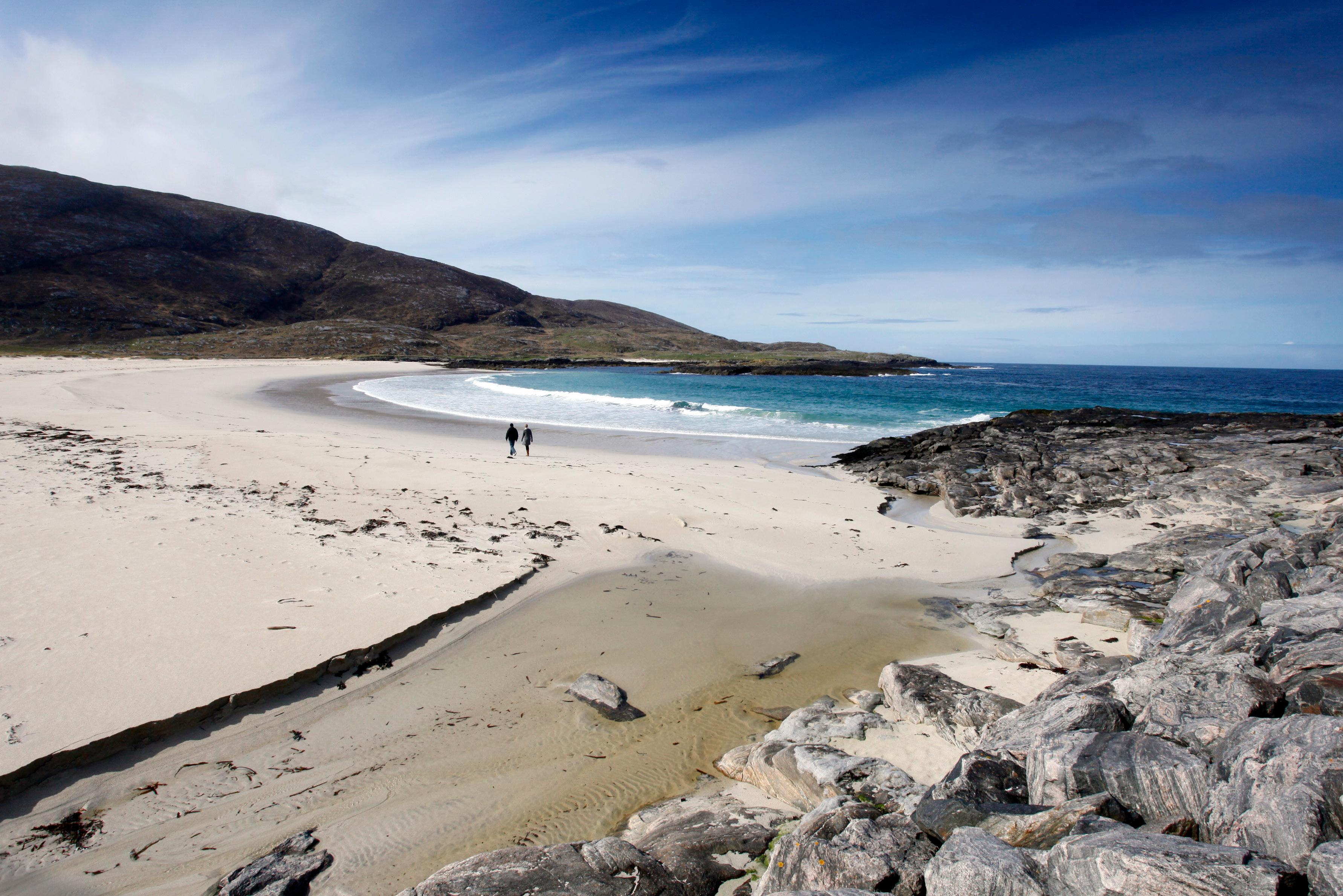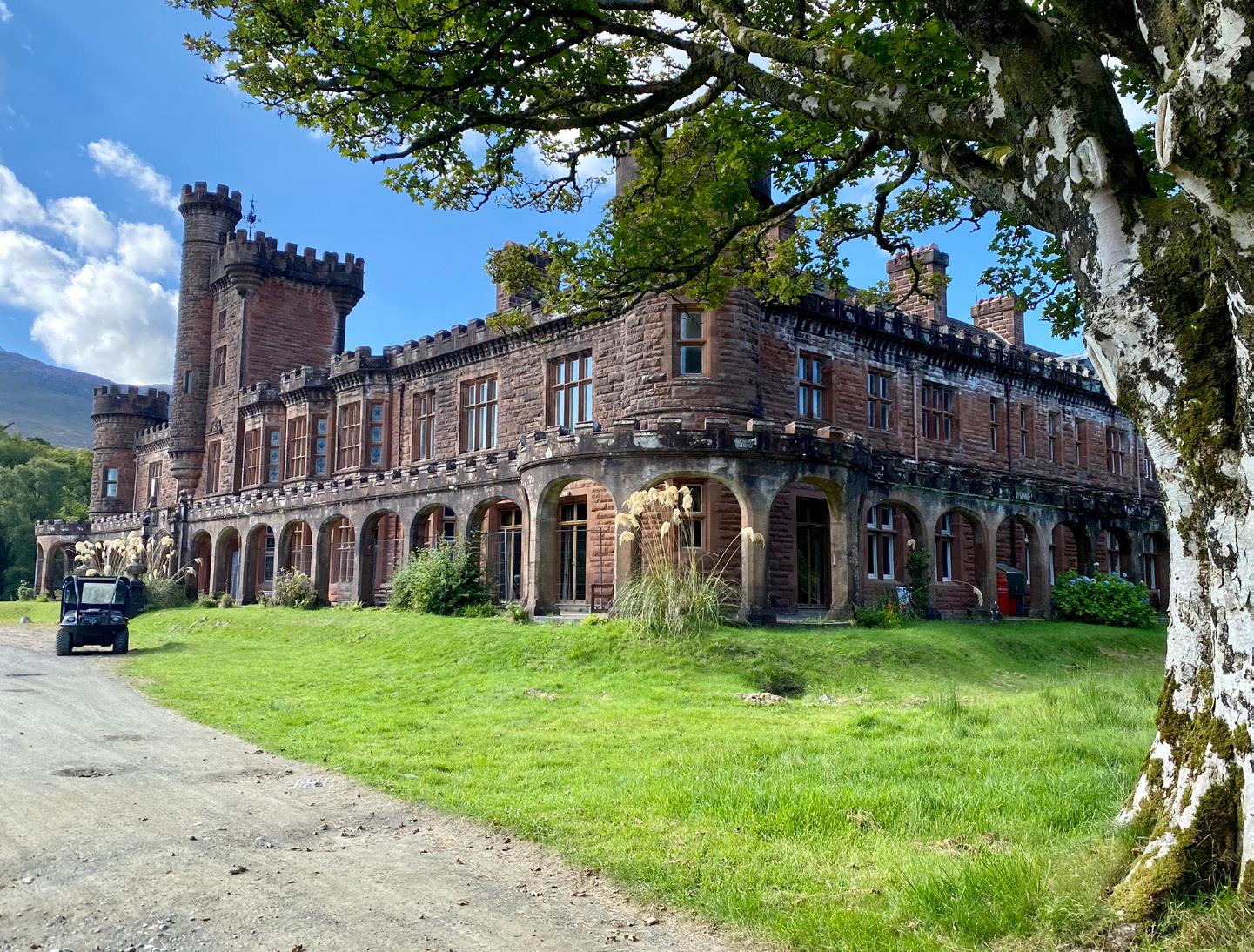
7 minute read
Island Hopping in the Hebrides
Remote, romantic and utterly unspoilt, these Scottish isles are the perfect antidote to everyday life.
It is always the way. The moment I descend to our cabin my teenage daughter, Daisy, yells “Quick, Mummy!” I rush back up on deck to see what the fuss is about and am greeted by a family of dolphins smiling and skipping joyfully alongside our little boat. Last time it was a minke whale surfacing. Just a couple of the treats we have enjoyed on our weeklong sailing adventure around Scotland’s Hebrides.
Our trip is with VentureSail, which have a choice of boats exploring this region – including yachts and tall ships. Most boats, like ours, have their own skipper and chef, so guests can either sit back, relax, and enjoy the views or learn a few sailing techniques if they are interested.
Life on board quickly settles into a routine. After breakfast we sail for a while, binoculars close at hand, then anchor off a new island. We are decanted into an orange dinghy, which whisks us ashore and then we are free to explore.
First there is Eigg, where we climb a heather-smothered hill before descending sharply to the Massacre Cave. In a long-ago clan war, 400 islanders hid here from vengeful rivals from Skye. Their hiding spot was eventually found, the narrow entrance to the cave stuffed with vegetation and set alight. Nobody survived. It is just one of the many stories we learn from our skipper, who has spent his whole life in the Hebrides.

DOLPHIN
Image credit Shutterstock
Back on board we enjoy the sunshine. Behind us a silky, milky sea ripples below velvet blue mountains.
As the light fades, we moor off Vatersay island. Gleaming white sands are fringed with emerald grass, where cows chomp thoughtfully. Behind it all, a supersized sun melts, red, pink and orange, into the sea. It is spellbinding.

EMMA AND DAISY O'REILLY
Next morning, we see the cows up close as we go ashore. This time they have taken over the beach. Daisy, made of sterner stuff than me, strides in for a swim. Most of the cows take no notice, but one paddles into the shallows and slurps the sea water – they love the salt apparently. Afterwards, a wander through the nearby village, with its Nordic-looking wooden homes, leads us to the island graveyard. We note the young age of so many buried here – testament perhaps to the toughness of life on these isles, where the sea is one of the few sources of income, and medical facilities are sparse.

BARRA ISLAND
VisitScotland / Paul Tomkins
Another day, another island. Barra is one of the most remote. Our skipper tells us how lucky we are with the weather – it’s the first time he’s reached the island all summer. A local taxi driver gives us a tour.
At the island’s airport, little planes take off and land on the ‘runway’ – in reality just a huge sweep of sandy beach. When we tire of plane spotting, we cross a small road, follow a little path and discover another stretch of soft bleached sand, lapped with lazy waves. It could be the Caribbean, especially on this warm, sunny day. We are the only ones here.
Back on board, our boat passes the looming basalt Cliffs of Canna and we spot sea eagles flying above. We climb ashore at Sanday island, where there is a haunting ruined church (one of three dotted across Sanday and neighbouring Canna).
We walk the length of the island, passing fields, the occasional house and some magnificent Belted Galloway cows, with their thick fur coats perfect for braving any chilly weather. A pedestrian bridge takes us to Canna. From it we see deep kelp forests below the crystal-clear surface of the sea. On the other side we chance upon an old dairy, where a few items are for sale, alongside a donation box. A small sign tells me that they were once the belongings of Magda, a Spanish lady who came here on holiday since being a child then later made friends with a local couple, the Campbells. She eventually moved to the island herself and became the archivist for the Campbell’s impressive home, Canna House (now owned by The National Trust for Scotland). Magda recently died and her husband is selling some of her possessions to raise money for a cancer charity. I buy a small fishshaped ceramic dish as an unusual and rather touching souvenir.

BELTED GALLOWAY
Damian Shields/Visit Scotland

INVERIE
As we arrive at Rùm in the early evening another spectacular sunset awaits. Above the dark outline of a volcanic peak, fluffy clouds hover, their blush pink and gold hues reflected in the still, silent water below. Some seals come to say hello.
The next morning is for exploring. Wooded trails lead us past a surprisingly stylish modern bunk house and a tiny, unstaffed ‘boutique’, where modern technology allows my daughter to buy a knitted halterneck top by scanning a barcode. We find the island’s general store, too, but it’s closed. A sign on the door states - ‘Dinnae Even Knock – The Shop is Closed’!

GREY SEAL
Our last stop on the island is the most intriguing. Kinloch Castle, built as a shooting lodge and party house for an aristocrat in 1897, is like something from a Dickens novel. I can just imagine Miss Havisham sitting upstairs in her wedding dress. It’s all locked up, but through the windows we see dusty rooms with mahogany panelling and shredded silk curtains. A taxidermied golden eagle looks down at the white rabbit it has caught in its claws.
There’s a library, still stuffed with books, and a vast galleried hall with a grand piano, animal skin rugs and ancestral paintings. We hear that the castle has recently been on sale for £1.

KINLOCH CASTLE HALL
The catch is that the buyer must commit to spending several million pounds on its restoration.
As we start our return to mainland Mallaig, where we started our journey, we stop off briefly on the Knoydart peninsula, at the tiny village of Inverie. It is accessible only by a two-day hike across the Highlands – or by boat. Still, there are plenty of people here and it feels positively buzzy after the quiet of the last few days. We sit outside the pub drinking rosé wine and toasting our good fortune.

KINLOCH CASTLE
Our week has been pure luxury. Not luxury in terms of five-star accommodations and service, but that thing that many of us crave –peace, exclusivity and the opportunity to spend quality time together, with no interruption. Our mobile phones, usually whipping us into a constant state of alertness have been mostly forgotten; work and other stresses put out of our minds entirely. Priceless.

MALLAIG
VisitScotland / Kenny Lam
Emma O’Reilly travelled with her daughter as a guest of VentureSail. One-weeklong yacht and tall ship itineraries start from £1,017 per person, with all meals and skipper included. Guests can book a cabin or a whole boat, venturesailholidays.com
Text by Emma O'Reilly










